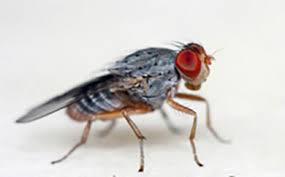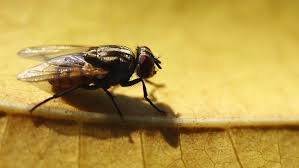Identification is the First Step In A Successful Fly Management Program
The first step to getting rid of and preventing small or large flies is determining which specie is present, where it came from, and why it is attracted to your business.
Sprague Pest Solutions regional entomologist Ashley Roden, B.C.E. shared her insights on what makes flies tick and why they are a threat to commercial properties on a recent webinar.
“Since there are numerous fly species present in our environment it is important to make the correct identification, that is the key to a successful fly management program,” said Roden. “Some flies look like stinging insects, and they like to mimic other insects.”
Why Are Flies Successful?
Flies are successful in being a nuisance or threat to commercial properties since they are:
- Highly mobile
- Quickly lay their eggs in large numbers
- Have a fast life cycle
- They require little food to survive
The two fly groups that threaten commercial properties are small flies and large flies. Let’s break down the characteristics of each.
Small Flies
- May originate inside or outside a structure
- Complete their life cycle indoors
- Sanitation is critical in population reduction
- They are generally not seasonal
Roden shared an example of a restaurant Sprague was called to service that was experiencing a dark eyed fruit fly problem. The first step was to identify the source of the infestation.
Since fruit flies like fermenting organic material drains are a likely source. Unique construction features – cabinets built over drains for example – make it hard to access drains for cleaning or inspections and create a perfect location for dark eyed fruit flies. In this instance a blocked drain was found in the kitchen and the fruit flies were attracted to the organic food materials that had built up inside.
Organic material build-up in horizontal soda lines also create an ideal breeding site for small flies as does dirt buildup in floor grout lines.
Solutions to Small Flies
- Attack the problem in several ways and stack treatment effects including bioremediation, landing zone treatments, growth regulators and structural repairs.
- Step up sanitation and cleaning practices.
- Do a deep clean and move (if possible) food processing and preparation equipment and prevent food waste from building up in drains.
Large Flies
- Originate outside of structure and although they can complete their life cycle indoors (blow flies); often only the adults enter the building.
- Sanitation may have a lesser effect on these species.
- They may be seasonal.
Sometimes the source of the infestation is far away and not on your property. Large flies – the lesser house fly, house fly, blow/bottle fly, filth fly – usually breed within 100 feet of a structure, but they also can travel from miles away. While good sanitation practices are essential, they are not always the final answer due to their outdoor nature and the reality that you can’t clean up the whole neighborhood.
Why is preventing and controlling large flies critical in commercial properties, especially those involved with food processing and service? Adult filth flies eat by regurgitating fluid onto its food and then sopping up the dissolved result with its sponging mouthparts. When they land on food or food preparation surface they spread bacteria. Filth flies also leave fecal deposits wherever they feed.
A large food processor Sprague services experienced a chronic house fly problem all spring and summer. The facility was very clean and well maintained, including the dumpster area, and there was no excess moisture visible. These factors made it hard to identify the source of the infestation.
After an exhaustive inspection of the facility at ground level, it was decided to inspect the roof. It turned out the roof was holding water and that food dust being discharged through the ventilation system mixed with puddles of water to create organic material – an ideal breeding area for house fly maggots. When the maggots evolved into adults, they flew inside the facility. Sprague vacuumed up the maggots and the facility corrected the drainage issue.
Solutions to Large Flies
- Inspection is important – don’t forget the roof!
- Exclusion practices can reduce flies that are coming from the exterior.
- Removing the larvae and eliminating excess moisture can stop the life cycle.
Overview/Takeaway
- Flies spend much of their lives in unclean areas and present a serious threat to public health and contamination of food products.
- Seek out the source of the infestation.
- Robust fly management programs will have many elements, and all play a part an important role including:
- Sanitation
- Bioremediation
- Exclusion
- Traps
- Pesticides
For more information on how Sprague Pest Solutions can assist you create and deliver an effective stored fly prevention and management program for your commercial facility, call 855.805.0755.

